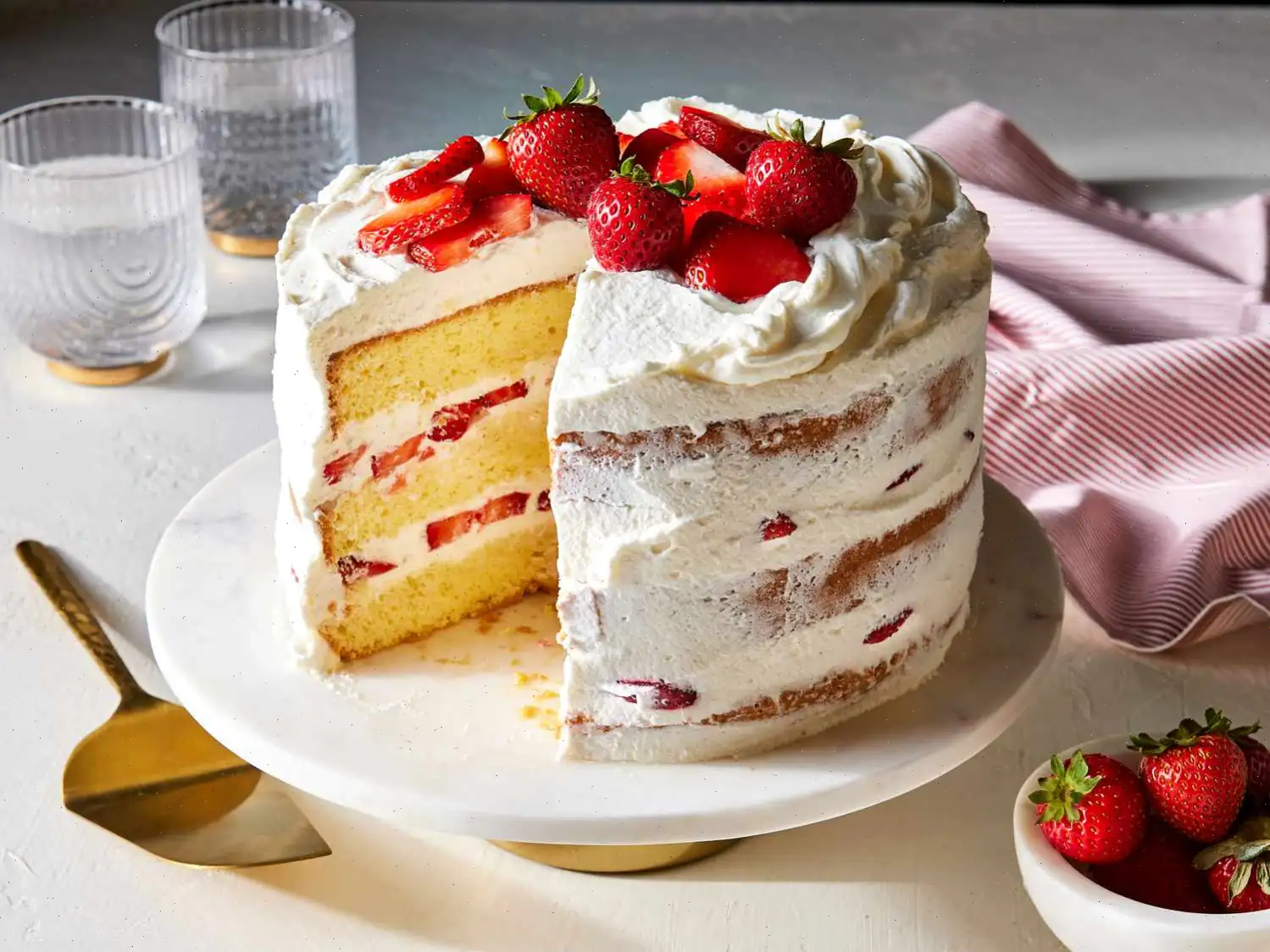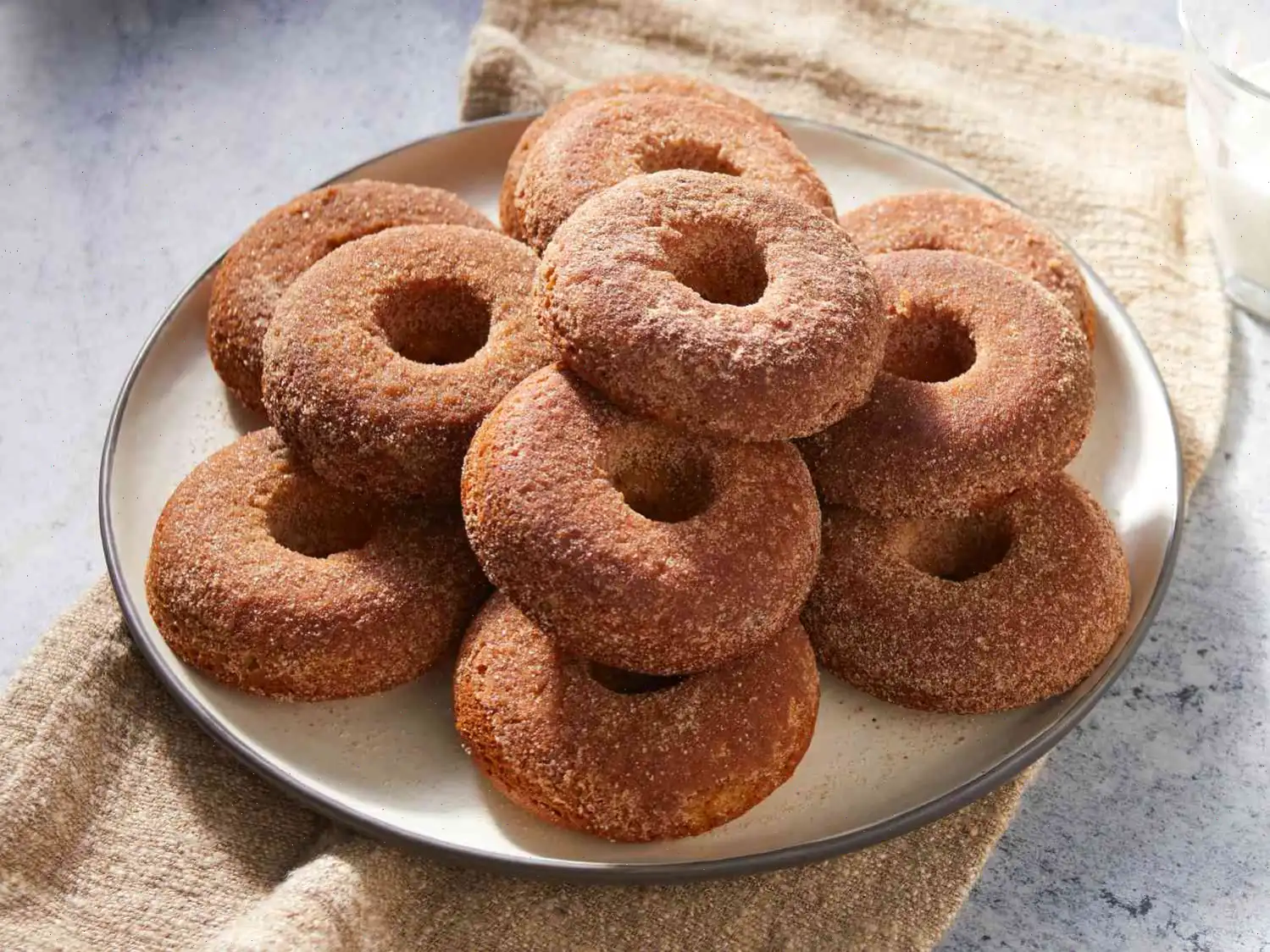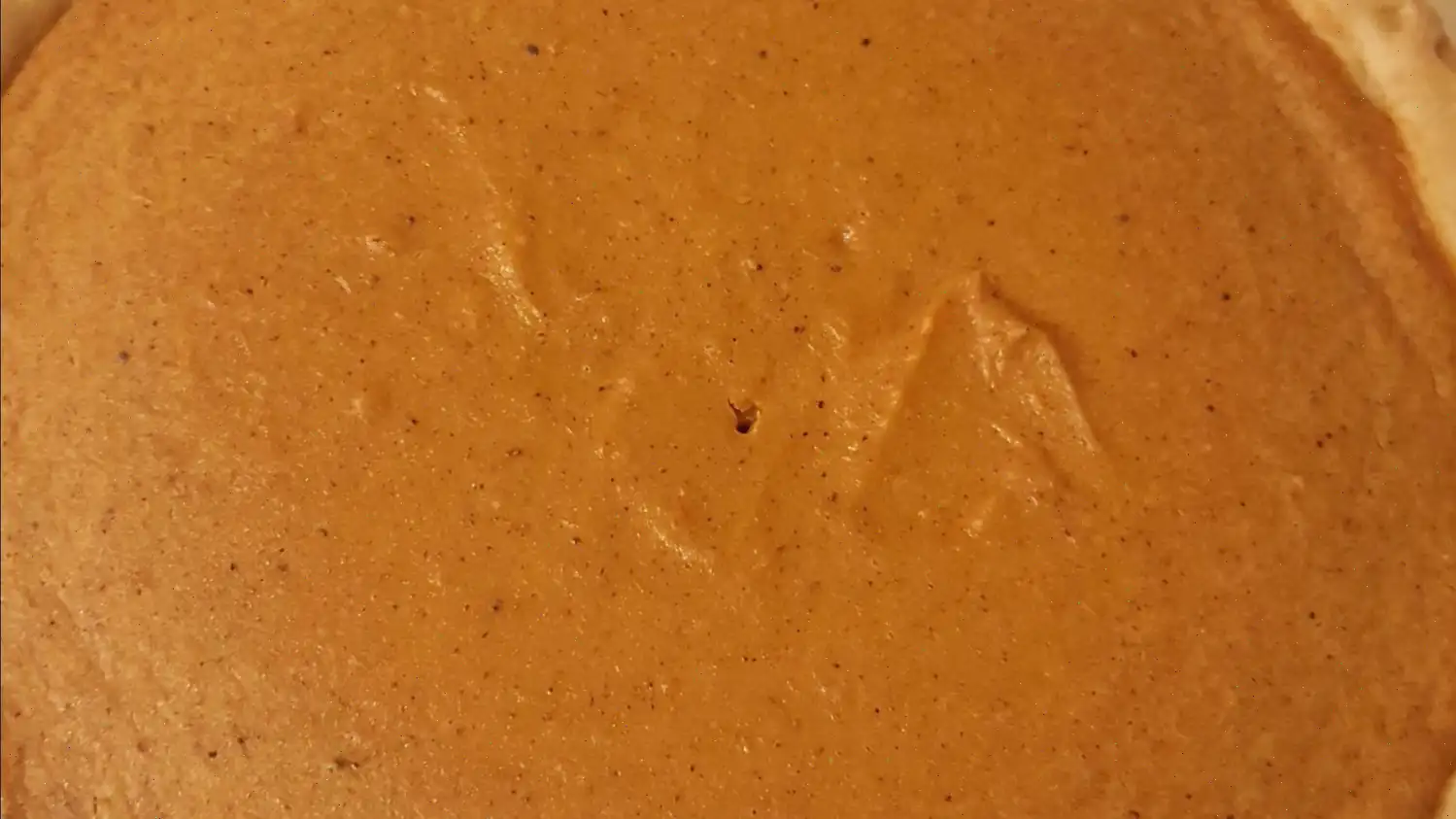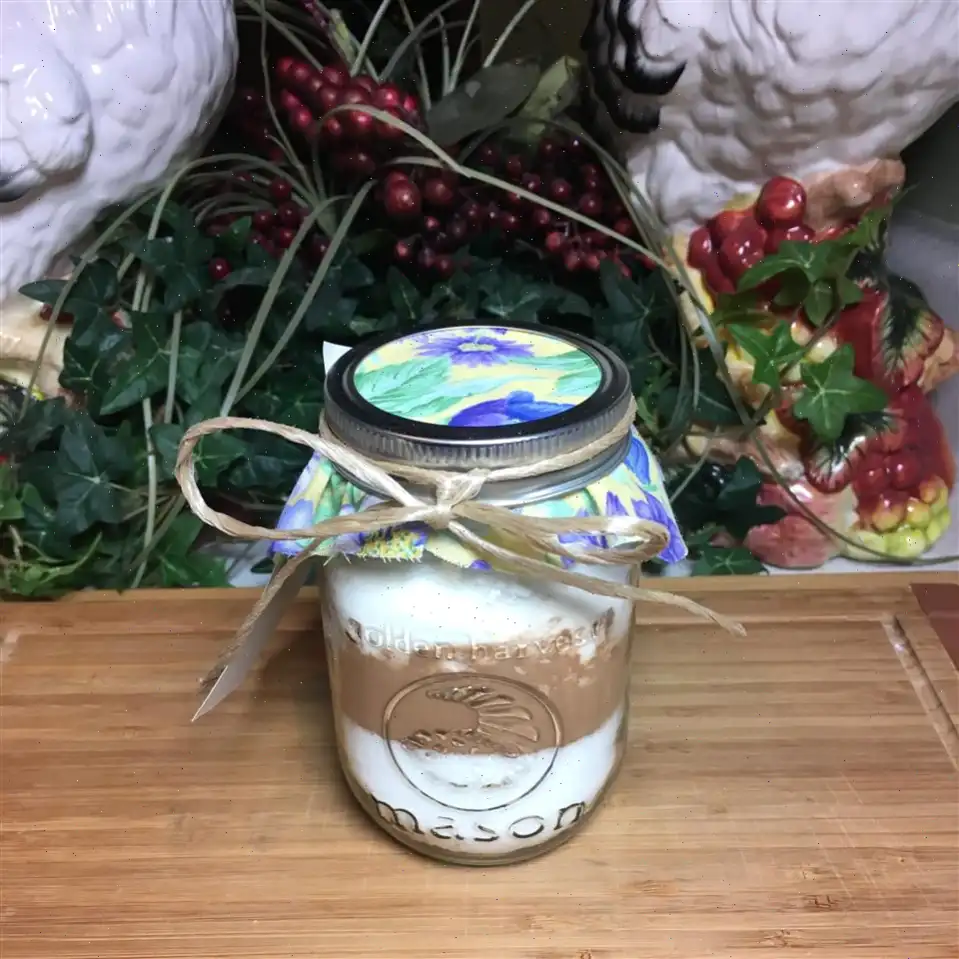
Japanese Christmas Cake Recipe
Ingredients:
- 6 large eggs, separated and at room temperature
- 22 tablespoons white sugar, divided
- 1/4 teaspoon salt
- 1 1/2 cups cake flour, sifted
- 2 tablespoons avocado or grapeseed oil
- 2 tablespoons whole milk
- 1/2 cup water
- 3 tablespoons orange liqueur (e.g., Grand Marnier)
- 3 cups whipping cream
- 1/2 to 3/4 cup powdered sugar
- 1 tablespoon vanilla extract
- 1 pound fresh strawberries, sliced (about 3 cups)
Directions:
- Preheat oven to 320F (160C). Lightly grease an 8-inch cake pan and line it with parchment paper, allowing the paper to extend 1-2 inches above the edge of the pan.
- In a large bowl, mix the egg yolks and 10 tablespoons of white sugar with an electric mixer on high for 2-3 minutes until the mixture becomes pale and thick.
- Wash and dry the beaters. In a separate bowl, beat the egg whites and 6 tablespoons of white sugar with the electric mixer on high until medium-stiff peaks form (the tips should curl). The mixture should be glossy and fluffy.
- Carefully fold one-third of the egg white mixture into the egg yolk mixture. Then gently fold in the remaining two-thirds of the egg white mixture, taking care not to deflate the batter (approximately 30 folds).
- In a medium bowl, stir together the salt and flour. Sift half of the flour mixture into the batter and fold it in until just combined. Add the remaining flour mixture and fold until well combined (about 40 folds).
- In a small bowl, stir together the oil and milk. Microwave the mixture on high for about 30 seconds, then pour it into the batter and fold until fully incorporated (around 30 folds). The batter should remain airy.
- Pour the batter into the prepared cake pan. Gently tap the pan on the countertop to remove any air bubbles. Bake for 40-45 minutes, or until the top is golden brown and a thermometer inserted into the center reads at least 190F (88C). Invert the cake onto a wire rack and let it cool.
- For the simple syrup, combine hot water, liqueur, and the remaining 6 tablespoons of sugar in a small bowl, stirring until the sugar dissolves. Let the mixture cool.
- In a food processor, pulse the whipping cream, powdered sugar, and vanilla extract until stiff peaks form (about 45 seconds).
- Once the cake has cooled, slice it horizontally into 3 equal layers (each about 1 inch thick). Brush the simple syrup evenly over each layer, using all of the syrup.
- Place one layer of cake on a serving plate. Spread about 3/4 cup of whipped cream on top of the cake layer. Arrange one-third of the sliced strawberries over the cream. Spread another 3/4 cup of whipped cream over the strawberries, gently pressing the cream between the berries.
- Top with a second layer of cake and repeat the process with whipped cream and strawberries. Finish with the third layer of cake, then frost the top (and sides, if desired) with whipped cream. Garnish with the remaining third of strawberries.
- Chill the cake for at least 1-2 hours and up to 4 hours to allow the flavors to meld. Cut the cake into 10 slices and serve.
Recipe Tip: You can bake the cake and prepare the whipped cream up to 24 hours in advance. Store them separately and gently rewhip the cream before assembling the cake.
Nutrition Facts (per serving):
- Calories: 545
- Fat: 32g (41% of daily value)
- Saturated Fat: 18g (89% of daily value)
- Cholesterol: 193mg (64% of daily value)
- Sodium: 118mg (5% of daily value)
- Carbohydrates: 56g (20% of daily value)
- Dietary Fiber: 1g (4% of daily value)
- Total Sugars: 39g
- Protein: 8g (16% of daily value)
- Vitamin C: 27mg (30% of daily value)
- Calcium: 78mg (6% of daily value)
- Iron: 2mg (13% of daily value)
- Potassium: 207mg (4% of daily value)
The Story Behind Japanese Christmas Cake
The Japanese Christmas cake, known as kurisumasu kki, has a history that traces back to the post-World War II era. During this period, Western-style confections began gaining popularity in Japan, and Christmas, though not traditionally celebrated, became an occasion for indulgence. Bakeries introduced light, airy sponge cakes topped with fresh cream and strawberries, inspired by European shortcakes, and they quickly became a symbol of festive celebration. Over time, the cake grew into a cultural icon, representing joy, prosperity, and seasonal luxury.
Regional Variations and Characteristics
While the fundamental structure of Japanese Christmas cakea soft sponge, whipped cream, and strawberriesremains consistent, regional bakeries often add unique touches. In Hokkaido, the cream is richer and more buttery, reflecting the region's dairy heritage. Tokyo bakeries sometimes layer cakes with imported fruits like kiwi or mango, while Kyoto shops emphasize delicate flavors and refined presentation. Despite these variations, all versions prioritize a light, fluffy texture that distinguishes the cake from heavier Western desserts.
Differences from Similar Desserts
At first glance, the Japanese Christmas cake may resemble a strawberry shortcake, but the differences are notable. Unlike typical Western shortcakes, the Japanese version uses a less sweet, airier sponge and incorporates whipped cream both between layers and as frosting. The cake is often taller and meticulously layered to achieve a soft, cloud-like texture. It also avoids the heavy buttercream or dense fondant common in European Christmas cakes, favoring a subtle sweetness that complements the fruit.
Occasions and Places Where Its Served
Japanese Christmas cake is traditionally enjoyed on December 24th or 25th, as Christmas in Japan is more of a romantic or family-oriented holiday than a religious one. It is commonly purchased from specialty bakeries, department stores, or homemade for special gatherings. In modern Japan, couples often exchange cakes as part of a Christmas date, while families may serve it after a festive meal. Cafs also feature mini versions for single servings or dessert sets, making it widely accessible across the country during the holiday season.
Fun and Unique Facts
- The cake is often associated with the idea of freshness, and in Japan, it is customary to eat it within a day or two of purchase.
- Strawberries are chosen not only for taste but for their vibrant red color, symbolizing happiness and prosperity.
- In Japan, being unsold Christmas cake on December 25th has even become a metaphor for being past ones prime, reflecting cultural attitudes toward freshness and timing.
- Despite being a winter holiday dessert, its lightness and fruitiness make it popular year-round for birthdays and special occasions.
- Japanese Christmas cakes often feature elaborate decorations, from chocolate piping to edible ornaments, showcasing the artistry of Japanese pastry chefs.
You can listen to this recipe in AI audio format. Simply click the play button below to listen to the content in a format that suits you best. It’s a great way to absorb information on the go!
FAQ about Japanese Christmas Cake Recipe
Comments
Scott Garcia
11/18/2024 11:19:33 AM
This cake was absolutely divine! It had a light and airy texture that was simply delightful. While it required a bit of precision, it was definitely manageable for someone with baking experience. Just be sure to monitor the oven temperature closely; it should be set to 320°F instead of 350°F. Since every oven is unique, your cake may require more or less time to bake to perfection. We opted for orange juice instead of Grand Marnier, and it turned out wonderfully.
Sharon Parker
05/21/2023 04:57:41 PM
I decided to make this cake for my daughter's birthday, and it turned out to be absolutely perfect. It reminds me a lot of a strawberry shortcake but with a lighter texture. I stuck to the recipe as written, except that I used two 9-inch round cake pans, baked them for 25-30 minutes (just until a toothpick came out clean), and then sliced each cake horizontally to make 4 thin layers. This step was essential in creating a fluffy, moist cake with just the right amount of cream and berries.
Thomas Clark
12/21/2023 11:39:39 PM
Rewritten review: The potential of this recipe is promising. The batter came together beautifully, but the cooking time was way off. After 45 minutes, the internal temperature only reached 170°F, although the thermometer probe came out clean. Usually, I'd take the cake out at this point, but the directions insisted on reaching 190°F. Another 15 minutes in the oven (in 5-minute intervals) didn't bring the temperature up much; at 178°F, I stopped because the cake seemed to be drying out. Unfortunately, it turned out super dry. Constantly checking and opening the oven definitely interfered with the cooking process. If I were to try it again, I might bake it for 47-48 minutes and then remove it. While I understand it needs to be firm enough for slicing, as long as the cake is thoroughly baked and allowed to cool, it should be fine. Additionally, the flavor seemed lacking, so next time I'd add some vanilla. This cake is definitely more suited for special occasions due to its labor-intensive nature, requiring numerous bowls and steps. It's a shame it didn't live up to my expectations. Lesson learned not to try unreviewed recipes for Christmas dinner!








